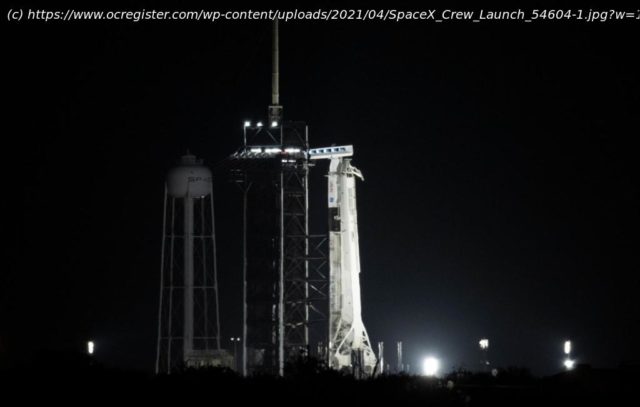The astronauts from the U.S., Japan and France should reach the International Space Station early Saturday morning, following a 23-hour ride in the same Dragon capsule used by SpaceX’s debut crew l…
CAPE CANAVERAL, Fla. — SpaceX launched four astronauts into orbit Friday using a recycled rocket and capsule, the third crew flight in less than a year for Elon Musk’s rapidly expanding company. The astronauts from the U.S., Japan and France should reach the International Space Station early Saturday morning, following a 23-hour ride in the same Dragon capsule used by SpaceX’s debut crew last May. They’ll spend six months at the orbiting lab. It was the first time SpaceX reused a capsule and rocket to launch astronauts for NASA, after years of proving the capability on station supply runs. The rocket was used last November on the company’s second astronaut flight. Embracing the trend, spacecraft commander Shane Kimbrough and his crew weeks ago wrote their initials in the rocket’s soot, hoping to start a tradition. “If you have rapid and complete reusability, then that is the gateway to the heavens. That’s what we’re trying to get done, and the support of NASA makes a huge difference,” Musk said after the launch. Just a week ago, NASA awarded SpaceX a nearly $3 billion contract to provide the lunar lander that will deliver astronauts to the surface of the moon — Musk’s Starship, intended to be fully reusable to attain his ultimate prize of carrying astronauts to Mars and building a city there. Flying in a recycled capsule Friday provided a bit of deja vu for NASA astronaut Megan McArthur. She launched in the same seat in the same capsule as her husband, Bob Behnken, did during SpaceX’s first crew flight. This time, it was Behnken and their 7-year-old son waving goodbye. McArthur blew kisses and offered virtual hugs. Also flying SpaceX on Friday: Japan’s Akihiko Hoshide and France’s Thomas Pesquet, the first European to launch in a commercial crew capsule. It was a stunning scene: The launch plume glowed against the dark sky, reflecting the sunlight at high altitude.






